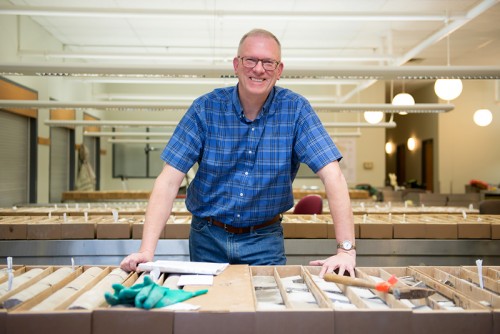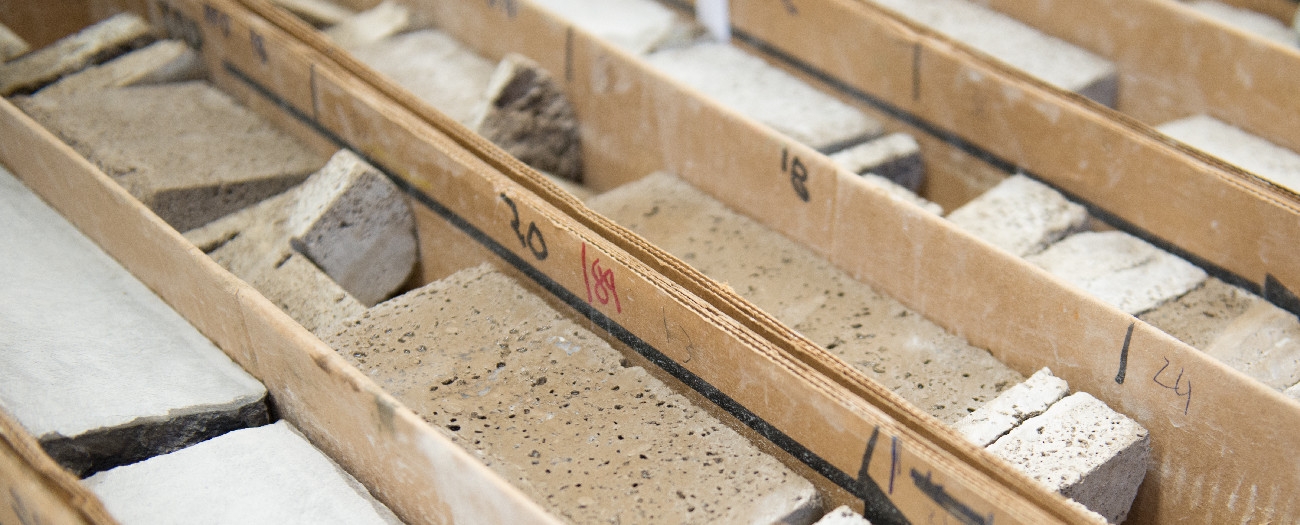The Core Research Centre is a unique facility that is much more than a storage space for rocks
Alberta - January 22, 2018
Doug Hayden says he has spent the better part of his 30-plus-year career in cubicle number 153 at the Core Research Centre (CRC), noting with pride that “it’s like I just moved in and never moved out.”
As the geological consultant walks through the facility, he is greeted, waved to, and even hugged by most everyone he passes (queue the Cheers theme song). His space, which occupies two cubicles, is filled with the essential equipment of a geologist: a high-powered microscope, trays of drill cuttings, a fluoroscope, and his computer. Off to the side lies a FedEx box that contains rocks from South America that Hayden points to while he talks about the reputation of Canadian geologists.
“Companies in places like South America know that Canada has expertise that can be applied to their oil exploration.”
So, in addition to being known for its love of hockey, its polite and friendly people, and all things maple, Canada is also known for its geologists. And that is, in part, due to the impressive collection of core samples and drill cuttings that are stored for anyone to study at the Alberta Energy Regulator’s (AER’s) CRC in Calgary.
Enabling Innovation

Located near the University of Calgary campus, the facility holds one of the largest, most complete drilling histories in the world. And anyone can go see this collection of almost two million metres of core and the more than 20 million vials of drill cuttings, which is great news for rock buffs, but also for Alberta’s oil and gas industry. The 200 000-square-foot space is a hub of activity. On any given day, geologists, students, and even landowners can be found spritzing water on columns of core pulled from the earth decades ago, or peering into microscopes to study cuttings to help determine whether a location will yield oil-and-gas riches. This saves both time and money.
“The access to the physical data at the CRC is a significant, competitive advantage for companies wanting to explore for hydrocarbons in Alberta,” explains the CRC’s director, Ray Kuntz. “Investors can come here and test their hypotheses without actually having to drill themselves.”
This explains the high demand for facility tours. In 2017, in addition to the regular clients, close to 300 people from over 20 countries—most of whom work for oil and gas companies or energy regulators—passed through the CRC’s doors. Kuntz says the facility appeals to other jurisdictions in part due to the “forward-thinking regulations” that are the rationale behind the CRC’s existence.
“The easy and affordable access to this material and data supersedes any other facility,” says Kuntz. “We are enablers of innovation; we are not doing the research ourselves, but we are enabling it to happen.”
A Community of Knowledge
Enabling this research is what keeps consultants like Hayden working. Even during the slow times, he’s spending half of his time pulling core and examining cuttings for his clients at the CRC.
He is quick to point out another advantage of the CRC that isn’t immediately obvious: the collaboration that happens within the building’s brick walls—an effortless and organic phenomenon that often takes place over coffee in the lounge.
“This isn’t just a storage facility,” Hayden says. “Learning happens here every day by people exchanging ideas and theories, and it’s based on the material and data that is right here."
Cassie Naas, Writer
Luke Spencer, Digital Media


